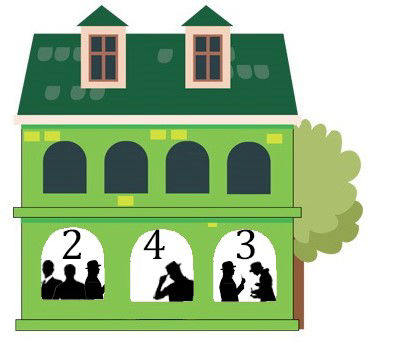Problems
Let \(n\) numbers are given together with their product \(p\). The difference between \(p\) and each of these numbers is an odd number.
Prove that all \(n\) numbers are irrational.
Some real numbers \(a_1, a_2, a_3,\dots ,a _{2022}\) are written in a row. Prove that it is possible to pick one or several adjacent numbers, so that their sum is less than 0.001 away from a whole number.
a) Could an additional \(6\) digits be added to any \(6\)-digit number starting with a \(5\), so that the \(12\)-digit number obtained is a complete square?
b) The same question but for a number starting with a \(1\).
c) Find for each \(n\) the smallest \(k = k (n)\) such that to each \(n\)-digit number you can assign \(k\) more digits so that the resulting \((n + k)\)-digit number is a complete square.
Are there such irrational numbers \(a\) and \(b\) so that \(a > 1\), \(b > 1\), and \(\lfloor a^m\rfloor\) is different from \(\lfloor b^n\rfloor\) for any natural numbers \(m\) and \(n\)?
Two players in turn paint the sides of an \(n\)-gon. The first one can paint the side that borders either zero or two colored sides, the second – the side that borders one painted side. The player who can not make a move loses. At what \(n\) can the second player win, no matter how the first player plays?
The meeting of the secret agents took place in the green house.

Considering the numbers in the windows of the green house, what
should be drawn in the empty frame?

Find one way to encrypt letters of Latin alphabet as sequences of \(0\)s and \(1\)s, each letter corresponds to a sequence of five symbols.
Pinoccio keeps his Golden Key in the safe that is locked with a
numerical password. For secure storage of the Key he replaced some
digits in the password by letters (in such a way that different letters
substitute different digits). After replacement Pinoccio got the
password \(QUANTISED17\). Honest John
found out that:
• the number \(QUANTISED\) is divisible
by all integers less than 17, and
• the difference \(QUA-NTI\) is
divisible by \(7\).
Could he find the password?
Using the representation of Latin alphabet as sequences of \(0\)s and \(1\)s five symbols long, encrypt your first and last name.
Decipher the quote from Philip Pullmans "His Dark Materials":
Erh csy wlepp orsa xli xvyxl, erh xli xvyxl wlepp qeoi csy jvii.
The same letters correspond to the same in the phrase, different letters
correspond to different. We know that no original letters stayed in
place, meaning that in places of e,r,h there was surely something
else.